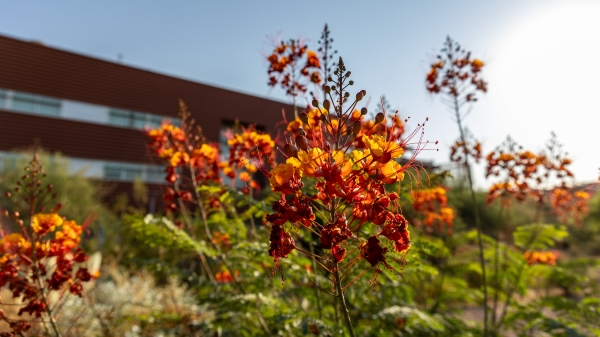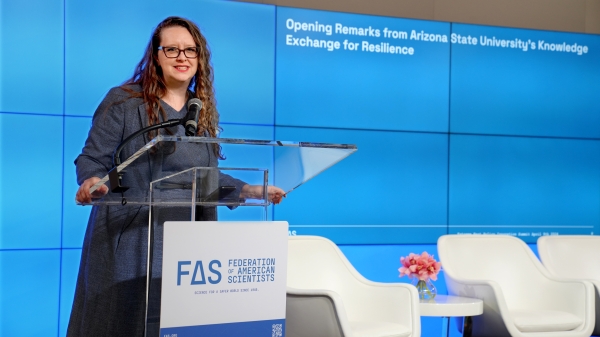ASU center takes water issues on the road
Decision Center for a Desert City, Smithsonian partner on WaterSim America project to teach ins, outs of water management

Arizona State University and the Smithsonian Institution have combined to create an interactive computer simulation to show the public how complex it can be to manage water on a state level in the face of drought and climate change.
WaterSim America, a project from ASU’s Decision Center for a Desert City, which helps leaders make sustainable water choices, and the Smithsonian’s Museum on Main Street, a travelling exhibition, aims to help spur “transformative action required for a better, secure future,” said Christopher Boone, dean of the School of Sustainability at Arizona State University.
“WaterSim America is a great platform to educate the broader public on what they can do as individuals and groups to manage water in ways that lead to positive change,” Boone said.
The interactive uses issues and scenarios involving water resources to provide a clearer picture of what the future might hold. It also introduces the public to the complicated budgeting process that provides for current and future water needs.
In the simulation, each state has its own model of water supply and demand running on a web server, which can show the impact of population growth and drought as well as various water management policies. It calls for users to respond to challenges that have shifted supplies and demands out of balance. Users must select policies to steady their state’s water system.
“At the center of everything is the question ‘How do we make better decisions about the future and manage our resources in a sustainable way?’” said Dave WhiteWhite is also a professor in ASU's School of Community Resources and Development in the College of Public Service and Community Solutions., director of the center. “Because water management is such a complex system, there are hundreds of ways it can be managed. There is no single or optimal path to water sustainability.”
WaterSim America is based on a model developed by the center’s Liz Marquez, David Sampson and Ray Quay. Their program can help drought-ravaged cities anticipate a range of possible future conditions and build capacity for sustainable water resource management and climate adaptation.
Researchers at ASU's Decision Center for a Desert City modified their popular WaterSim program so that it could explore water issues on a state level. The program is part of a Smithsonian Institution's Museum on Main Street traveling exhibit.
The framework, White said, “provides a way for people to explore this complex system from these different viewpoints and to understand that tradeoffs exist in whatever path we choose.”
WaterSim America will be part of the “Water/Ways” exhibition from the Smithsonian Institution’s Museum on Main Street program, a part of the Smithsonian Institution Traveling Exhibition Service, which seeks to directly engage small town audiences and bring new attention to underserved rural communities.
The “Water/Ways” exhibition highlights the relationship that people have with water both collectively and individually. It allows users to explore different options and share their input.
The exhibition, including WaterSim America, will travel to Florida, Illinois, Minnesota, Idaho and Wyoming through next year.
Decision Center for a Desert City is a research unit funded by the National Science Foundation and administered by the Julie Ann Wrigley Global Institute of Sustainability at Arizona State University.
Top photo: A flock of birds sit on the floating barrier on a warm Friday, Jan. 22, 2016, on Tempe Town Lake. Photo by Charlie Leight/ASU Now
More Environment and sustainability

Study: Conservation actions highly effective at halting, reversing biodiversity loss
A new study, led and contributed to by Arizona State University faculty, provides the strongest evidence to date that not only is nature conservation successful, but that scaling up conservation…

Barrett Honors College to host nature walks for science, relaxation
Barrett, The Honors College at Arizona State University is gearing up to participate in the City Nature Challenge (CNC) for the fourth consecutive year. This annual event, taking place April 26–29,…

Arizona adapting to heat crisis with initiatives featured in ASU report
Arizona State University's Knowledge Exchange for Resilience, also known as KER, released its Recommendations Report on Extreme Heat Preparedness earlier this April during a summit in the nation's…
